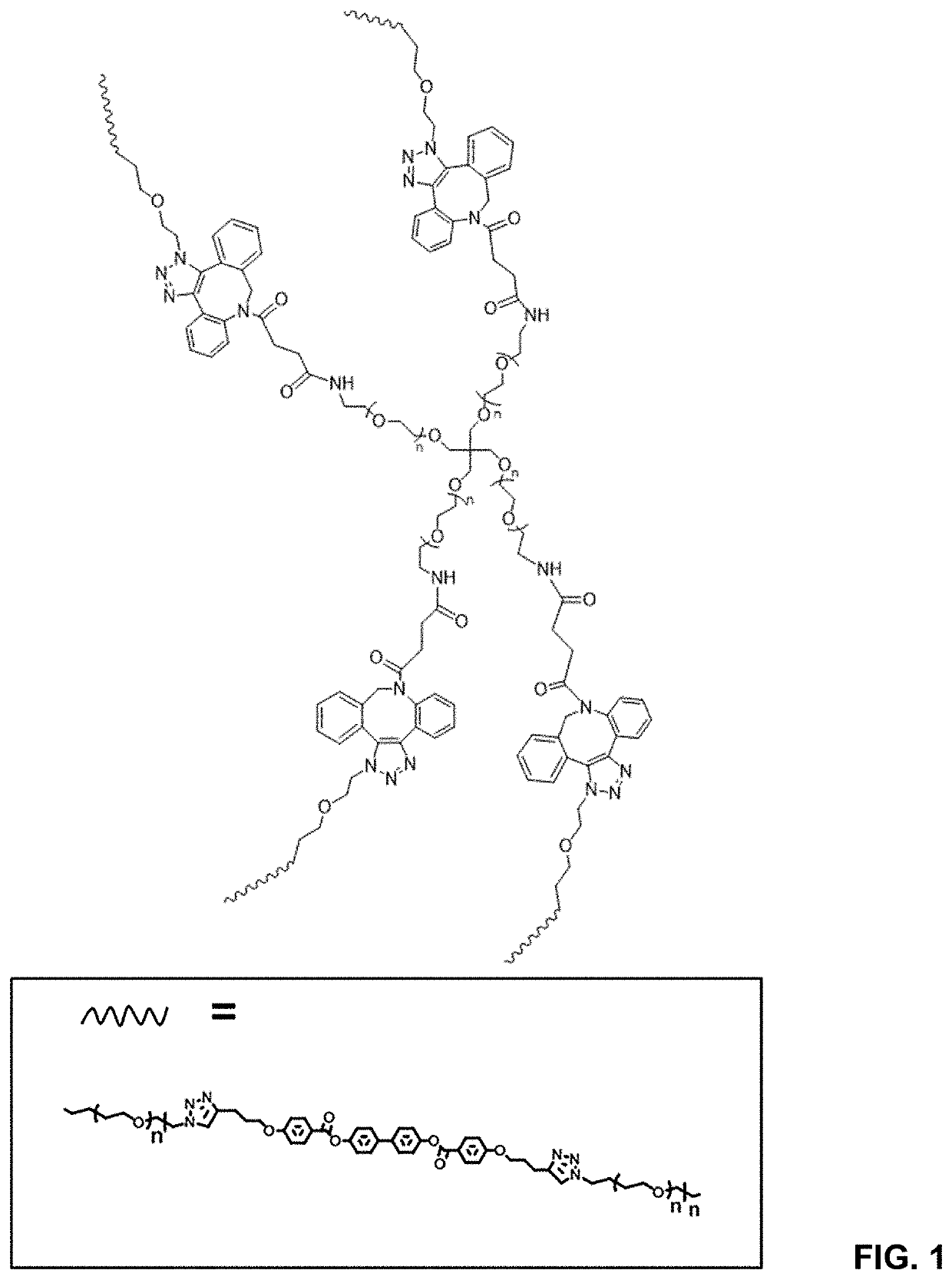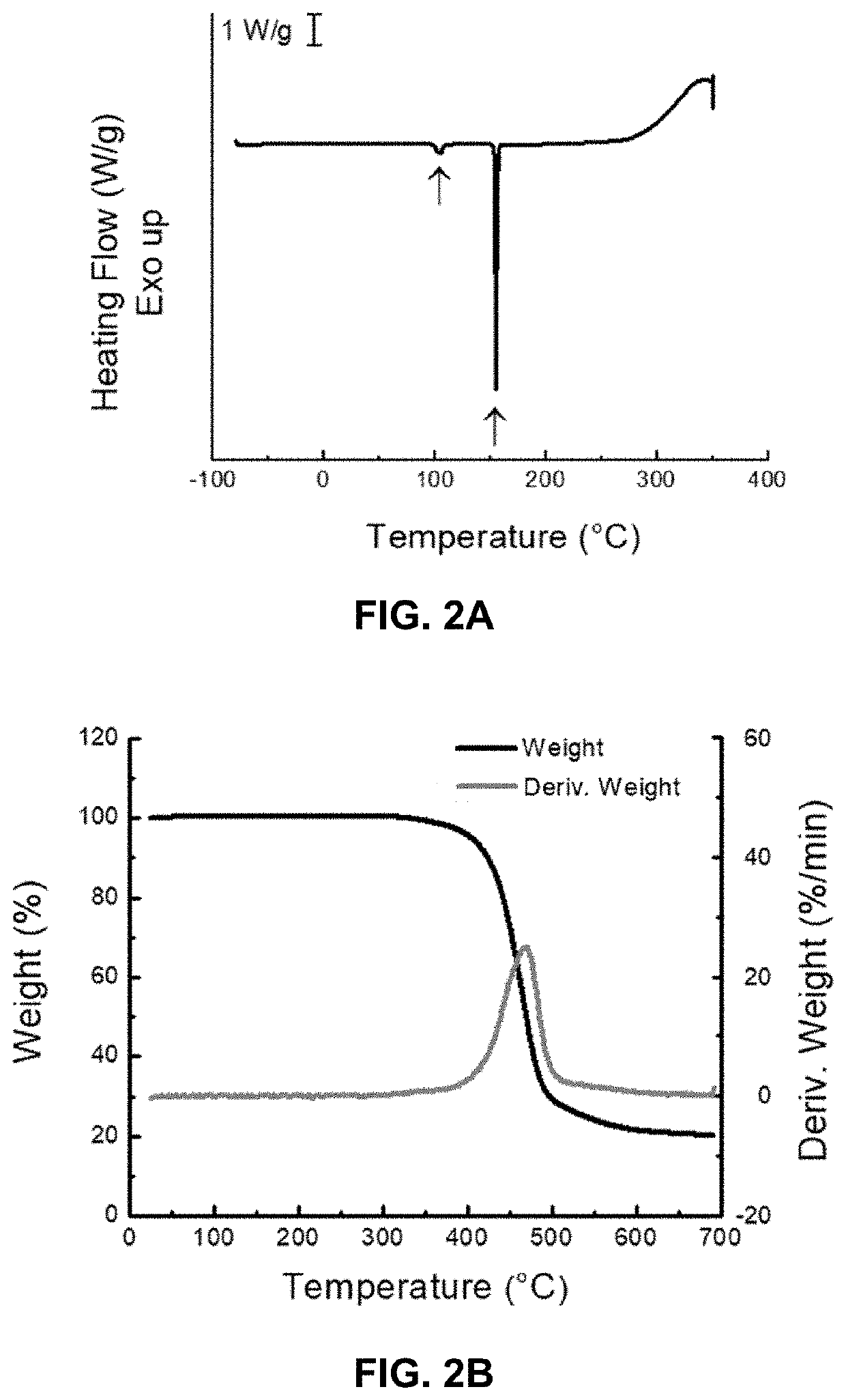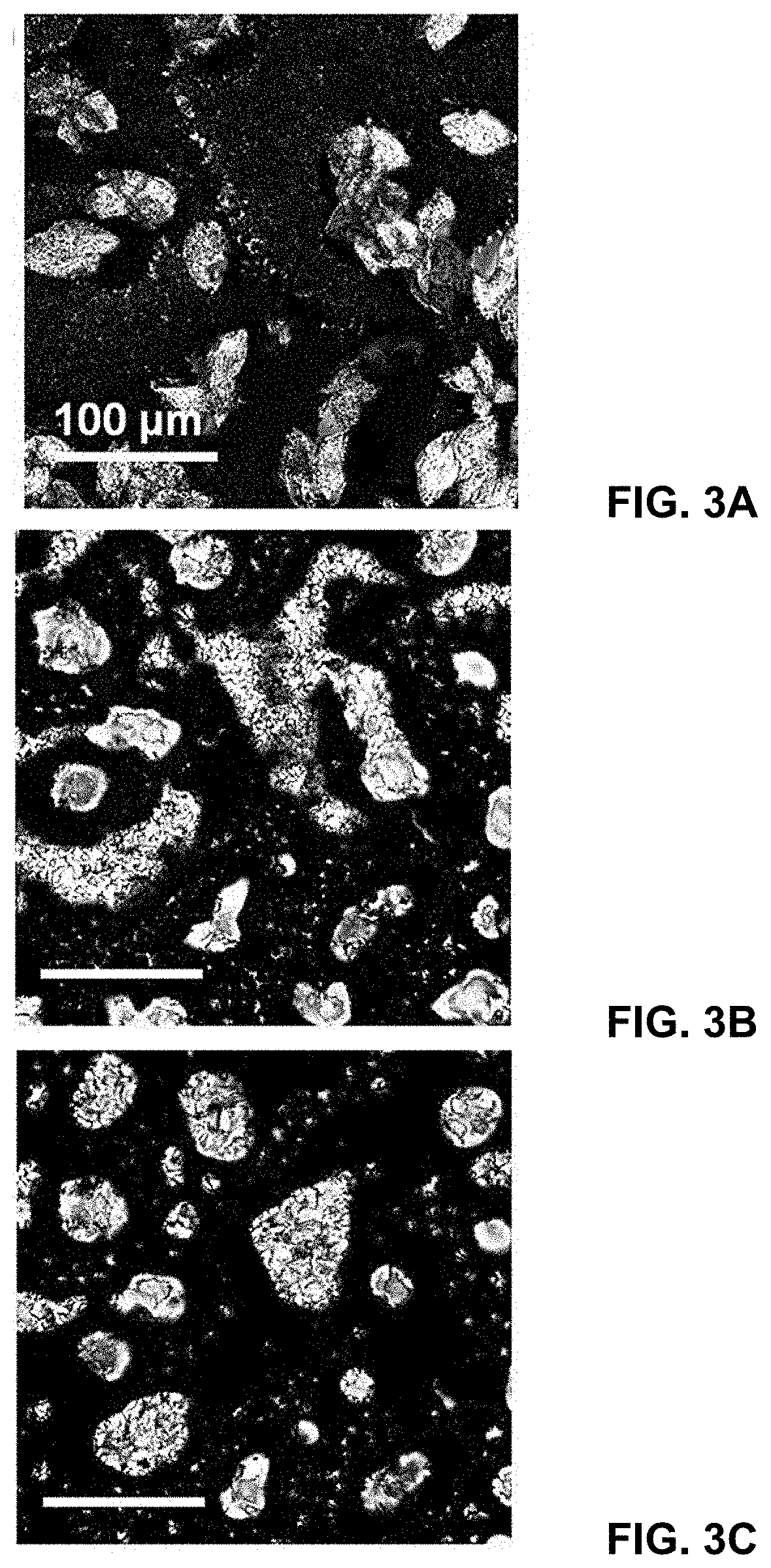Main-chain liquid crystalline hydrogels for cell culture
- Summary
- Abstract
- Description
- Claims
- Application Information
AI Technical Summary
Benefits of technology
Problems solved by technology
Method used
Image
Examples
example 1
and Characterization of Polymer Networks
Synthesis of 1,1′-biphenyl(4,4′-bis(4-pentyloxybenzoate)) (5yHBP)
[0129]5yHBP was synthesized as shown in Scheme 1 using 4,4-dihydroxybiphenyl. 5yHBP was purified by recrystallizing from a mixture of ethyl acetate and 2-propanol (5 / 1, volume ratio). The yield of 5yHBP was about 63%. Proton nuclear magnetic resonance spectroscopy (1H NMR) in CDCl3 resulted in the following chemical shifts (δ) for 5yHBP in ppm: 8.17 (4H, m), 7.63 (4H, m), 7.28 (4H, m), 7.00 (4H, m), 4.18 (4H, t), 2.44 (4H, m), 2.04 (6H, m).
[0130]Synthesis of Linear 5yHBP-PEO20 Polymers
[0131]5yHBP (71.5 mg, 0.128 mmol) was weighed into a 25 mL Schlenk flask and purged with nitrogen gas for 3 min. Anhydrous DCM (2 mL) was added into the flask to dissolve the mesogen, followed by adding PEO20-diazide (141 mg, 0.141 mmol) to the flask. Cu(I)Br (20.0 mg, 0.0140 mmol) was dissolved in 0.4 mL deoxygenated DMF, and the catalyst solution was injected into the flask after the mesogen and P...
example 2
l Studies
[0157]Cell Encapsulation
[0158]Human mesenchymal stem cells (hMSC, 320,000 cells) were suspended in 20.0 μL of 13 wt % 4-arm DBCO-PEO dissolved in sterile, complete culture medium (DMEM containing 10% FBS and 1% anti-anti). 10 wt % 5yHBP-PEO20-4.1 polymer dissolved in sterile, complete medium before adding 44.0 μL of the solution to the cell suspension and gently pipetting to mix. A 25.0 μL aliquot of the reacting mixture was placed over an area of 24 mm2 on top of a polystyrene coverslip, which was then placed in the bottom of a 24-well tissue culture plate. The solution gelled, and after 10 minutes the well was flooded with 0.45 mL complete DMEM. Cells were cultured at 37° C. in a 5% CO2 incubator. For encapsulating hMSCs in N-PEO75 networks, 15 wt % PEO75-azide in complete medium (23.0 μL) was added to 20.0 μL of 13 wt % 4-arm DBCO-PEO in complete medium that contained hMSCs (215,000 cells). The mixture was gently pipetted up and down to obtain a uniform suspension. The s...
PUM
| Property | Measurement | Unit |
|---|---|---|
| Atomic weight | aaaaa | aaaaa |
| Atomic weight | aaaaa | aaaaa |
| Temperature | aaaaa | aaaaa |
Abstract
Description
Claims
Application Information
 Login to view more
Login to view more - R&D Engineer
- R&D Manager
- IP Professional
- Industry Leading Data Capabilities
- Powerful AI technology
- Patent DNA Extraction
Browse by: Latest US Patents, China's latest patents, Technical Efficacy Thesaurus, Application Domain, Technology Topic.
© 2024 PatSnap. All rights reserved.Legal|Privacy policy|Modern Slavery Act Transparency Statement|Sitemap



